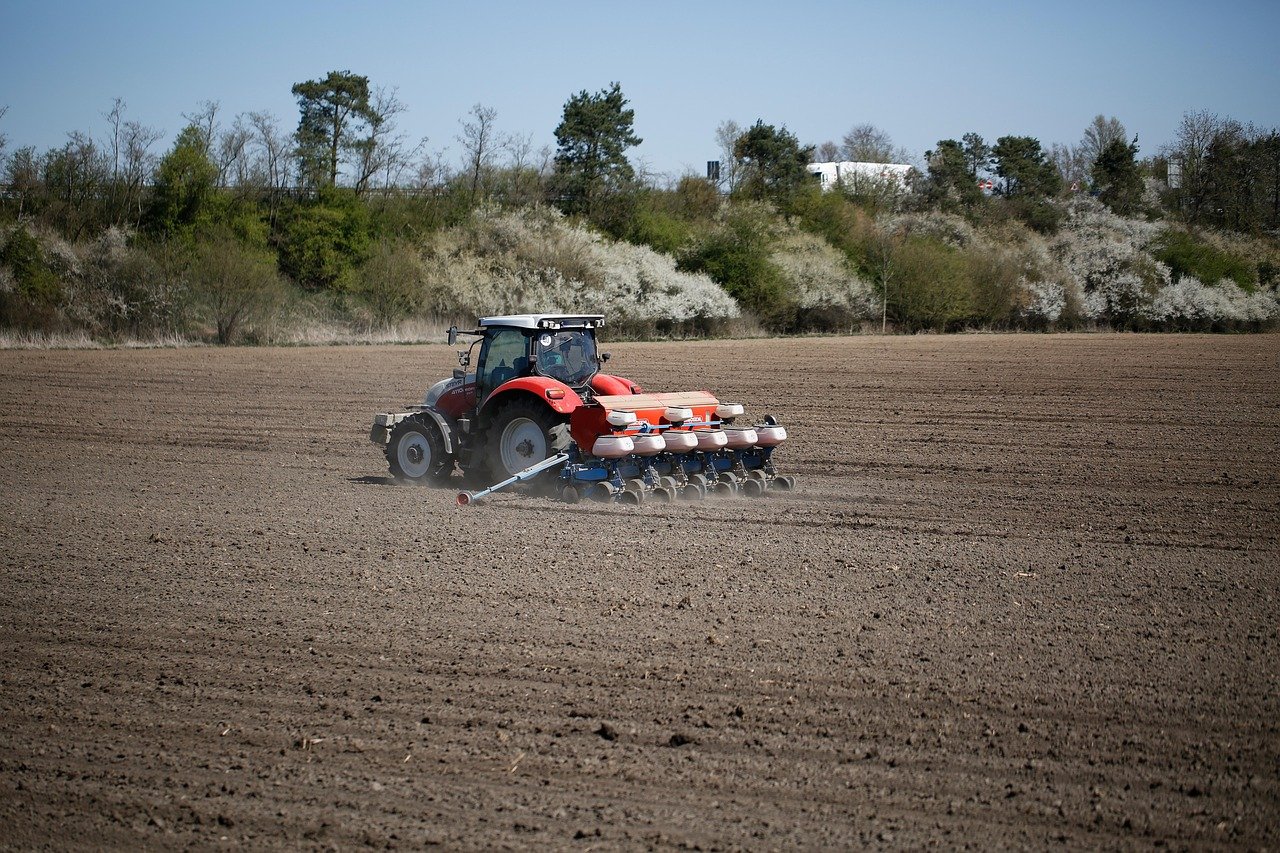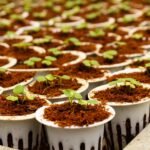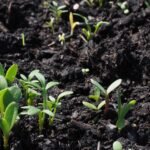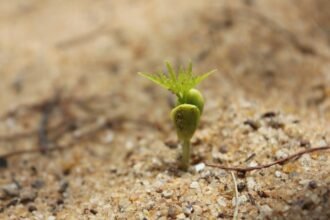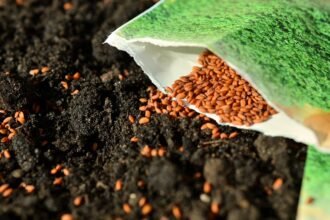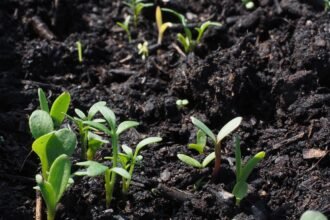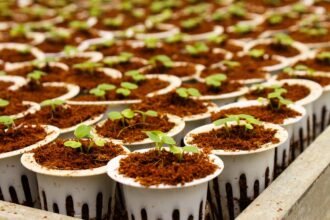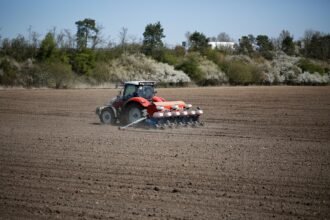The type of soil you use for sowing seeds plays a pivotal role in the success of your garden. Healthy, well-draining, and nutrient-rich soil creates the perfect environment for seeds to germinate and thrive. Choosing the right soil can help you avoid common pitfalls like seed rot, poor root development, or weak growth. In this guide, we’ll walk you through how to select the best soil for different types of seeds to ensure healthy germination and robust plant growth.
1. Understand the Importance of Soil for Seed Germination
Soil is the foundation of healthy plant growth. It provides the seeds with the necessary nutrients, water, and support to grow roots and develop into strong plants. The right soil:
- Offers proper drainage to prevent waterlogging, which can drown seeds.
- Retains moisture while allowing air to reach the roots.
- Provides essential nutrients like nitrogen, phosphorus, and potassium.
- Creates an environment that is conducive to root development.
By choosing the right soil, you give your seeds the best start possible, setting them up for a healthy, productive growing season.
2. Factors to Consider When Choosing Soil for Seeds
When selecting soil for sowing, there are several factors to keep in mind:
- Drainage: Good drainage is essential to prevent water from pooling around seeds, which can lead to rotting. Soil that is too heavy, like clay, can cause poor drainage.
- Texture: The texture of the soil influences its ability to retain moisture and nutrients. Loamy or sandy soils are typically ideal for seed sowing as they provide a balance between drainage and moisture retention.
- Nutrient content: Seeds require essential nutrients to germinate, but they don’t need a soil mix that’s too rich in nutrients at the early stages. Too much fertilizer can burn delicate seedlings. A soil mix with balanced nutrients is best for most seeds.
- pH level: Different seeds thrive in different soil pH levels. Most plants prefer a slightly acidic to neutral pH (6.0–7.0), but some, like blueberries, require more acidic soil, while others may tolerate alkaline soil.
3. Types of Soil for Different Seed Types
Different plants have different needs when it comes to soil. Here’s a breakdown of the ideal soil types for various seed types:
a. Seed Starting Mix
For most general seed sowing, a high-quality seed starting mix is the best option. These mixes are specially formulated to provide a light, fluffy texture that retains moisture but drains well. They are typically made from peat moss, coconut coir, and perlite or vermiculite.
- Best for: Most vegetables, flowers, and herbs
- Why it works: This type of mix has the ideal balance of moisture retention, aeration, and drainage that seeds need during germination. The fine texture ensures that small seeds, such as lettuce or parsley, can easily push through the soil.
b. Loamy Soil
Loamy soil is considered the “ideal” soil for most plants. It contains a balanced mixture of sand, silt, and clay, which provides good structure, drainage, and nutrient retention. It’s easy to work with and suitable for both seedlings and mature plants.
- Best for: Vegetables, flowers, and herbs
- Why it works: Loamy soil is nutrient-rich, yet well-draining. This type of soil encourages strong root growth and provides the moisture and nutrients needed for healthy plant development.
c. Sandy Soil
Sandy soil is light and drains very quickly, making it ideal for plants that prefer drier conditions and don’t like to have their roots sitting in water. However, sandy soil often requires amendment to improve its nutrient content and moisture retention.
- Best for: Plants like carrots, radishes, and other root vegetables
- Why it works: Sandy soil is great for root vegetables because it allows the roots to grow straight and deep without obstruction. It also warms up faster in spring, which is great for early planting.
d. Peat-Based Soil Mixes
Peat-based mixes are commonly used for starting seeds indoors, as they retain moisture well and provide a lightweight texture that allows for easy root development.
- Best for: Seed starting indoors, particularly for small or delicate seeds
- Why it works: Peat-based mixes offer excellent moisture retention, which is important for small seeds during the early stages of germination. However, peat is not an ideal long-term growing medium due to its acidic nature, so it’s best used for seed sowing only.
e. Clay Soil
Clay soil is heavy and compact, which can make it difficult for roots to grow and seeds to germinate properly. It retains moisture but can also become waterlogged, which can lead to seed rot.
- Best for: Plants like lilies and other moisture-loving species that don’t mind compacted soil
- Why it works: While not ideal for seed sowing, clay soil can support certain types of plants once they’ve established roots. For seed sowing, it’s often necessary to amend clay soil with organic matter to improve its texture and drainage.
4. Amending Soil for Seed Sowing
If your native soil isn’t ideal for sowing seeds, you can amend it with various soil conditioners to improve its structure and fertility. Here are some common amendments:
- Compost: Adds nutrients, improves drainage, and increases organic matter content.
- Perlite or Vermiculite: Improves soil aeration and drainage, preventing compaction.
- Coconut Coir: A sustainable alternative to peat moss that retains moisture and provides a light texture for seeds.
- Worm Castings: Rich in nutrients and beneficial microbes, worm castings help improve soil fertility and support healthy seedling growth.
- Sand: Increases drainage in heavy soils like clay.
To amend your soil, simply mix the necessary amendments into the top few inches of the soil or seed-starting mix.
5. Soil for Specific Types of Seeds
While the general soil recommendations above apply to most plants, there are specific seeds that require special conditions. Let’s take a closer look:
a. Vegetables
- Tomatoes, peppers, and cucumbers thrive in well-draining, nutrient-rich loamy soil. These crops prefer a slightly acidic soil pH of around 6.0-6.8.
- Root vegetables like carrots, radishes, and beets prefer sandy soil with good drainage and a slightly higher pH (6.5-7.0).
b. Flowers
- Annuals like marigolds and zinnias prefer a nutrient-rich, well-drained soil like loam or a seed-starting mix.
- Perennials like lavender and echinacea thrive in slightly sandy, well-drained soil with a neutral pH.
c. Herbs
- Basil, parsley, and cilantro require well-drained, loamy soil that is rich in organic matter. They do best with a slightly acidic pH (6.0-6.5).
- Mint and thyme can tolerate more compact or clay-heavy soils but still benefit from good drainage.
6. Tips for Using Soil for Seed Sowing
- Use a fine sieve: When preparing your seed-starting mix, use a fine sieve to remove any large particles or debris. This creates a smooth, even texture that is perfect for seed germination.
- Avoid soil from your garden: Garden soil can contain pests, disease, and pathogens that can harm seeds and seedlings. Always use a sterile seed-starting mix when starting seeds indoors.
- Monitor soil moisture: The soil should be kept moist but not soaking wet. Overly wet soil can lead to mold growth and poor seed germination.
Conclusion
Choosing the right soil for seed sowing is crucial for ensuring healthy germination and plant growth. The ideal soil will depend on the type of seed you are sowing, as different plants have unique requirements for moisture, nutrients, and texture. By understanding the different soil types and their properties, and by making adjustments to improve your soil’s structure, you can create the perfect environment for seeds to grow into thriving plants. Happy sowing!

